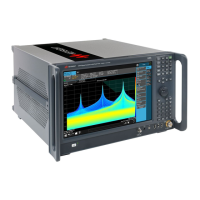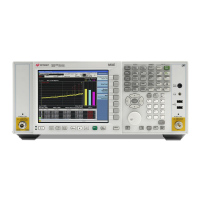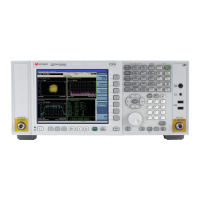Keysight Technologies N9040B UXA Signal Analyzer Service Guide 241
Hardware Options
A21 Wideband Analog IF Troubleshooting
Inputs to the A21 Assembly
A21J17 250 MHz or 750 MHz or 877.148 MHz IF signal (from A15J901
Front End Controller)
A21J4 2400 MHz reference from A16 Reference Assembly via W34 cable
A21J2 Calibrator signal from A3J17 40 MHz Digital IF via W45 cable
Outputs from the A21 Assembly
A21J3 2400 MHz Reference Out
A21J18 300 MHz IF Out to A3J16 of the 40 MHz Digital IF
A21J1 Calibrator Out to A16 Reference assembly A16J726 via W46 cable
A21 Wideband Analog IF Assembly Theory of Operation
The A21 Wideband Analog IF assembly primary role is to properly filter and
apply attenuation or gain to optimize the level going to the ADC and provide
sufficient pre-filtering to reject images that would otherwise interfere with the
signal of interest. Precision alignments are used to calibrate the filters,
attenuators and gain of this assembly. It is not uncommon that the reported
failure will come from failures reported when an alignment fails for this
assembly. The alignment history file is a good indicator of a failure for this
assembly. This file is a text file that can be viewed using a text editor. The file is
located in the following location:
E:\AlignDataStore\AlignmentHistory.txt
This file will list all alignments that have passed or failed. Alignments reporting
a failure of the WBAIF assembly can in many cases be attributed to failure of
this assembly. If however these errors follow errors in the RF section of the
instrument, it is possible that additional WBAIF error will appear due to
missing RF Calibration signals and not related to the A21 Wideband IF
assembly.
Manually troubleshoot the assembly is basically verifying the proper IF signal
at J17 is present and at the proper level. In addition you will want to verify
input and output levels of the various calibration and reference signals.

